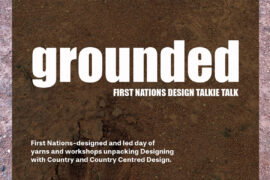Filipino designer Kenneth Cobonpue tells us what inspires him, and his thoughts on the Asian design landscape.

March 12th, 2014
Known for his passion and utilisation of local craft and natural materials, Kenneth Cobonpue is one of the few Asian designers to have successfully broken into the international design scene. So it’s perhaps not surprising that for its inaugural edition, Maison&Objet Asia has named him their ‘Designer of the Year’.
We catch up with Cobonpue following his keynote speech on day two of the fair for a quick chat.
What inspires you?
It comes from all sorts of places. I try not to force inspiration, but let it come naturally. But sometimes I still need to sit down and put myself in the right mood to be inspired. I’ve made furniture that’s been inspired by all sorts of things, like a crushed Coke can or a piece of croissant, and they’ve been successful pieces.
An example of one of the strangest source of inspiration came when my dog was giving birth. I was working on the design of a gazebo for a show and looking at the little puppies and so I came up with a design in the shape of a dog! And it worked really well.
Who would you love to collaborate with (living or dead)?
I like Charles Eames, because I think he was the quintessential 20th century renaissance man. He made films, he wrote books… he wasn’t just representing one aspect of design and everything he did was new in terms of technology. He pioneered a lot of things.
I’m also good friends with designers like Marcel Wanders and Ross Lovegrove and we design together for different collections. They’ve been inspirational to work with.
What do you think is the number one challenge for the design industry in the Philippines or Southeast Asia?
A design industry thrives when there’s also a manufacturing industry. That’s why Italy is great because they have both. But we are in this region there are a lot of companies who are doing good work: Thailand, Philippines… and Singapore for example, by being very cosmopolitan, has a unique role to play. You’re more exposed, so to speak. But it’s good and bad. The design can become too homogenous or too generic, which is what’s happening now.
How do we overcome this?
I think you really have to [make a] conscious effort to search for something new, something different.
What’s the difference between Western and Asian designers?
Something I can do that others can’t… when it comes to weaving and finding new ways to weave, and new materials, I think we are second to none in Asia. We have experience in weaving almost anything from carbon fibre to bamboo to combination of composite materials. We’ve been doing it a long time. It’s a cultural thing.
What are your impressions of Maison&Objet Asia? How does it compare to the Parisian show?
It’s different, I guess. I’m a little surprised. There’s no comparison, of course, to the one in Paris, because that’s really a huge space and everyone is involved. But being the first one in Asia, it’s all good stuff.
Is there anyone at the fair that has caught your eye?
There’s one Filipina that used to work with me, Lilianna Manahan. She’s one of the rising talents. And I like her style because it’s very quirky and very fun. It’s art and it’s unusual. [This is] very hard to find. A lot of young designers [in Asia] nowadays want to follow Western designers so it either looks very Scandinavian or something else, and you don’t even know it’s from Asia. It loses its personality. And I think Asian design needs that personality. Just like Dutch design or modern Italian design. I think we need to find our own identity. That’s one of the greatest challenges of Asian design, especially for countries that don’t have a furniture industry like Singapore or Malaysia. It’s going to be a problem.
If you have one advice for designers who are just starting out, what would it be?
I think it’s to do what’s natural, what’s in your heart. I think you need to have that spirit of fun, to show that you enjoy what you’re doing. Too often I see designers who are following trends, or want to be too commercial and they become ‘nothing’, [there’s] no soul. To find the soul it has to be something that you want to do. It’s important to put yourself in the design as well, and to come up with products that have heart.
Kenneth Cobonpue’s collection is carried in Singapore by Proof Living.
INDESIGN is on instagram
Follow @indesignlive
A searchable and comprehensive guide for specifying leading products and their suppliers
Keep up to date with the latest and greatest from our industry BFF's!

The undeniable thread connecting Herman Miller and Knoll’s design legacies across the decades now finds its profound physical embodiment at MillerKnoll’s new Design Yard Archives.

For Aidan Mawhinney, the secret ingredient to Living Edge’s success “comes down to people, product and place.” As the brand celebrates a significant 25-year milestone, it’s that commitment to authentic, sustainable design – and the people behind it all – that continues to anchor its legacy.
The internet never sleeps! Here's the stuff you might have missed

Join CPD Live from 14-16 October for three days of live, interactive education – 100% online, 100% free, and packed with insights to keep your knowledge current and earn CPD points.

Several design groups are coming together on 29th October, 2025 for ‘grounded,’ a day of talks and workshops on Country-centred design.